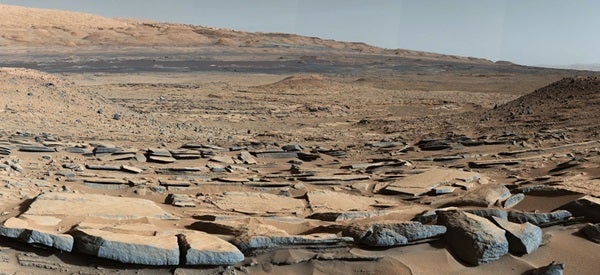“This series of long-lived lakes is not predicted by existing models of the ancient climate of Mars, which struggle to get temperatures above freezing,” said Ashwin Vasavada with the Mars Science Laboratory team.
The new findings also have implications for the formation of Gale Crater. Prior to Curiosity’s landing, a leading hypothesis held that Gale Crater had filled with wind-blown sediments — dust and sand. Subsequent wind-driven excavation of this fill gave the mountain, which rises 18,000 feet (5,500 meters), its present shape. Based on the new analysis, however, the in-filling of at least the mountain’s basal layer occurred primarily due to ancient river and lake sediments over a period of less than 500 million years.
“Paradoxically, where there is a mountain today there was once a basin, and it was sometimes filled with water,” said John Grotzinger from the California Institute of Technology (Caltech) in Pasadena, California. Grotzinger said that mapping data from NASA’s Mars Reconnaissance Orbiter and images from Curiosity’s camera seem to indicate that the water-transported sedimentary deposition could have extended at least 500–650 feet (150–200 meters) above the crater floor.
Regarding the original source of the water that carried sediment into the crater, Grotzinger said that there is now “geologic evidence for that moisture accumulating in the highlands of the Gale Crater rim.” He added that some have made the argument that the water came from an ocean located just on the other side of the crater’s northern rim. But pinpointing the location of an ocean does not explain how the water managed to exist as a liquid for extended periods of time on the surface. For that, it may be necessary to develop new atmospheric models.










